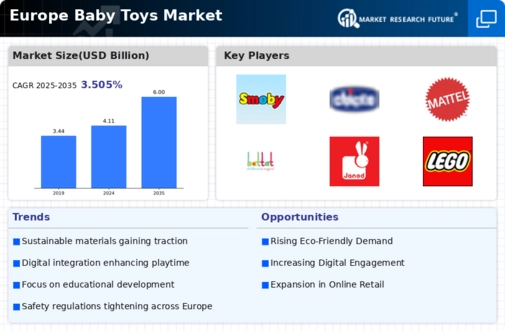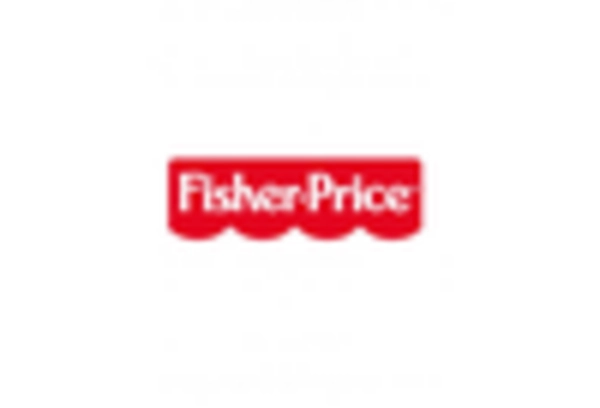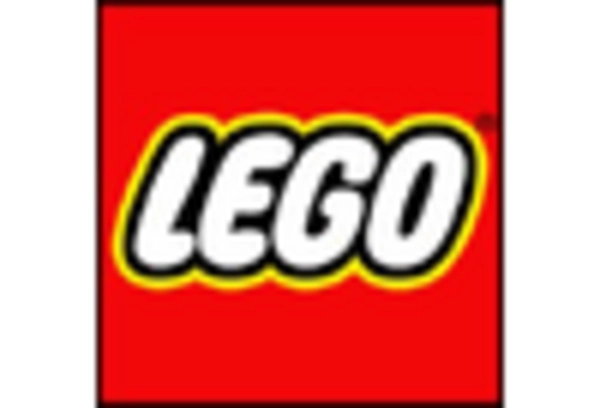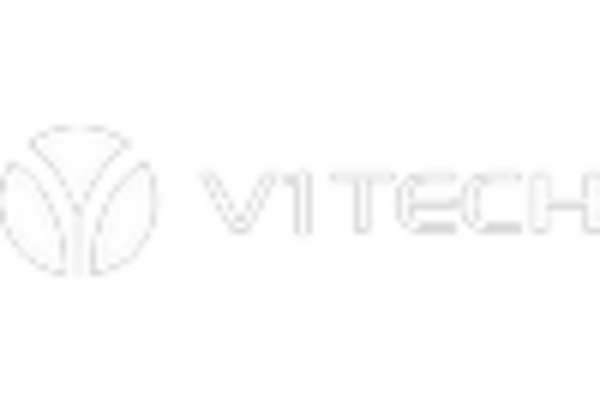Rise of Online Retailing
The baby toys market is witnessing a significant shift towards online retailing, driven by the convenience and accessibility of e-commerce platforms. In Europe, online sales of baby toys have surged, accounting for approximately 30% of total sales in the sector. This trend is largely attributed to the increasing reliance on digital shopping among parents, who appreciate the ability to compare products and read reviews before making purchases. As a result, traditional brick-and-mortar stores are adapting by enhancing their online presence. The growth of online retailing is expected to continue, with projections indicating a 15% increase in online sales within the next two years, further transforming the landscape of the baby toys market.
Technological Advancements
The baby toys market in Europe is experiencing a notable transformation due to rapid technological advancements. Innovations such as interactive toys, augmented reality, and smart devices are becoming increasingly prevalent. These advancements not only enhance the play experience but also promote cognitive development in infants. For instance, the integration of mobile applications with toys allows parents to track developmental milestones, thereby increasing the appeal of these products. The market for technologically advanced toys is projected to grow at a CAGR of approximately 10% over the next five years, indicating a robust demand for innovative solutions in the baby toys market.
Changing Consumer Preferences
The baby toys market is significantly influenced by changing consumer preferences, particularly among millennial parents. This demographic tends to prioritize educational and multifunctional toys that promote learning and development. As a result, manufacturers are increasingly focusing on creating toys that are not only entertaining but also serve educational purposes. The demand for STEM (Science, Technology, Engineering, and Mathematics) toys is on the rise, with a projected growth rate of 12% over the next few years. This shift in consumer behavior is reshaping the product offerings in the baby toys market, as companies strive to align with the evolving expectations of parents.
Health and Safety Regulations
In the baby toys market, stringent health and safety regulations are shaping product development and consumer preferences. European standards, such as EN71, ensure that toys are free from harmful substances and are safe for infants. Compliance with these regulations is not only mandatory but also serves as a competitive advantage for manufacturers. As parents become more aware of safety issues, they are increasingly inclined to purchase toys that meet these rigorous standards. This trend is reflected in the market, where toys that adhere to safety regulations are witnessing a growth rate of around 8% annually, underscoring the importance of safety in the baby toys market.
Focus on Eco-Friendly Products
The baby toys market is increasingly shifting towards eco-friendly products, reflecting a growing consumer demand for sustainable options. Parents are becoming more conscious of the environmental impact of their purchases, leading to a rise in the popularity of toys made from biodegradable materials and non-toxic paints. This trend is evident in the market, where eco-friendly toys are projected to grow at a rate of 9% annually. Manufacturers are responding by incorporating sustainable practices into their production processes, which not only appeals to environmentally conscious consumers but also enhances brand loyalty. The emphasis on sustainability is likely to play a crucial role in shaping the future of the baby toys market.


















Leave a Comment